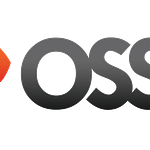
Audio above, text below. Enjoy!
I’ve been online longer than there has been an internet. My first foray into the online world was forums on local bulletin board systems. I talked mostly with people I already knew, and I met many more along the way. Because long-distance phone calls cost money, we generally only called local BBSes and that led to the common practice of user meets. We’d meet at pool halls around the city and get to know each other IRL. We weren’t all necessarily best buddies, but we did all know each other. I eventually graduated to the global Usenet newsgroups and as internet connections became faster and cheaper, now rub elbows with people all over the world. Because of my long history with online communities, I am always intrigued, almost fascinated, by how online communities work. And, in a lot of cases, why they’re generally failing so badly now.
What are communities?
I consider online communities to be ones where there are strong friend ties, and groups. That means sites like Facebook and Friendica instances qualify. There are strong friend ties in the sense that relationships are two-way. When I friend you, and you accept, we now have a two-way relationship where we have access to each other’s content, and the general public does not.
On the other hand, I do not consider sites with one-way, or primarily public posts to be communities. Twitter is a good example of a social media site that I do not consider a community. The relationships on Twitter are weak, one-way, “follower” type of relationships. There are no private groups, and private communication is available via DM, but it’s not the primary aim of the platform.
Now that we know what I consider a community, let’s see how that breaks down.
The big lie.
Through all the lies and missteps Facebook has had over the years, there is one fundamental lie that underpins everything Facebook does. Facebook has never wavered from this lie because to do so would be an existential threat to its ability to collect our data in order to sell it to advertisers. The lie is that the Facebook online experience mirrors real-life personal relationships.
The truth is that real-life relationships are fragmented by their very nature. None of us do anything with every single one of our friends. We don’t go to a movie with everyone we know and everyone we have ever known all the way back to high school. We don’t pop in on the birthday party of a coworker from ten years ago. Most people fade into the fabric of our life once we stop interacting with them on a regular basis, to be replaced with new people that are in our life now.
While there are a great many problems on Facebook and other strong-tie social media sites, the root of most of them can be traced back to this big lie.
Why do people join online communities?
A lot of study has gone into social group formation over the years. Humans are fascinated with ourselves and theories abound on why we bother to comingle at all.
Some of the factors that cause people to join groups are:
Proximity: the tendency to form groups with people physically present around you.
Similarity: the tendency to form groups based on similar demographics or values.
Complimentary: the tendency to form groups based on dissimilar, but complementary traits.
Reciprocity: the tendency to trust people we already like to form groups with people we will ultimately like.
Elaboration: the tendency for groups to grow primarily by tapping friends of already existing group members.
What makes a good community?
Cohesion. A group of people without cohesion is just a bunch of strangers.
British anthropologist Robin Dunbar states that the number of people a person can maintain a stable social relationship is around 150. That is the limit where things remain informal enough that you can “bump into members of that group for drink uninvited”.
It is also well understood that this group of people changes over time depending on who is in your life at any moment.
Within any group, cohesion is an important aspect that influences behavior. Highly cohesive groups are peaceful and they function well, both socially and in a task-oriented situation. Cohesion is not spontaneous, as Facebook would have us believe. Groups that have high cohesion share certain traits:
Attraction to the group and its members
Pride of belonging to the group
Shared task goals.
We now have a framework with which to view online communities. The basic parameters for a functioning community is a population of about 150 people, the factors that build cohesion within a group, and the reasons why people join groups. Now let’s look at Facebook groups using this framework.
Facebook groups are too big
Online communities are generally much larger than the 150 person group a normal human can handle. That in itself is not bad because all of us have to operate in larger groups from time to time. At work, at school, and in some community groups, we are part of a group that far exceeds our ability to maintain a relationship with. However, we are not expected to establish and maintain a relationship with everyone at a concert, so that does not cause us stress. These anonymous people are outside our circle of concern and while we’re aware enough of them to not run into them, we generally don’t see them or pay attention to them, therefore being present in this large group does not cause us stress.
However, most social media groups far exceed this 150-ish limit that humans can handle and the people in those groups are persistent in our lives, not part of the anonymous herd that is essentially invisible to us. Having a persistent interaction with a group that far exceeds our ability to relate to does cause us stress.
Out of the top 100 groups Facebook recommends to me, only 19 have less than 500 members, and only 5 have less than the 150 maximum social group size. Most of those groups have memberships well into the tens of thousands.
Facebook groups are not cohesive
What can those 81 groups with more than 500 members tell us? They tell us that those groups aren’t really working. A significant 71 of those 100 groups have less than 50 posts a day even though their membership soars far over 100,000 members in some groups. These are not the metrics of a cohesive group.
Let’s use the group cohesion traits and see what might be going wrong with those groups.
Attraction to the group and its members
There are two facets to group attraction. First, there is the internal attractiveness of the members to each other. Second, there is the external attractiveness to the group as a whole.
For example, Freemasons have a strong internal attraction - members generally think highly of each other, but the fraternity has poor external attraction. It is plagued with accusations of conspiracies and secrecy and its membership is generally shrinking globally.
Conversely, many Facebook groups have strong external attraction - users think that joining a certain group will benefit them, but they have poor internal attractions. Users in many Facebook groups are extremely toxic to each other.
Pride of belonging to the group
In this sense, pride is described as a sense of “we-ness”. We are a group and we are in this together. While there are some Facebook groups that do generate this kind of pride within its membership, those groups generally also share some traits that work for real-life communities to offset some of their less attractive traits. In general, this means that smaller groups aimed at a community niche tend to generate that sense of “we-ness”.
Shared task goals.
This particular cohesive indicator doesn’t have a lot of impact in social groups. Generally, when something has a task or a goal, it is no longer a social group; it is an organization of some kind. Having said that, groups that are formed for specific projects such as a neighborhood cleanup or local election can qualify as a social group that has goals and tasks. Generally, this is not the case, though.
How do Facebook groups grow?
Almost all Facebook groups grow. People who join a group generally don’t leave; it just falls off their radar if the group is not active and they forget they’re a part of it. Usually, some concrete event has to occur to cause someone to leave a group. Examples are that the group’s purpose has ended, or a fight of some kind broke out. Because of people’s tendency to join a group and then forget about it, groups generally grow over time as new members find it, and existing members don’t leave. Let’s look at how Facebook groups stack up using community recruitment factors.
Proximity
Facebook doesn’t provide a way to list groups so it’s not possible to gather good data on the state of Facebook groups overall. All I can work with are the group lists that Facebook suggests to me because of groups my friends belong to, or because of similarity with other groups I belong to. Because of this, it is very hard to say what portion of Facebook groups are formed around proximity but my anecdotal experience tells me that the segment is high. I think a lot of Facebook groups are tied to physical locations either directly, such as “People of Winnipeg” or indirectly such as “Oak Street High School Class of 95.”
Similarity and Complimentary
Similarity fares well, too. Many Facebook groups are based on exactly this; people who are of the same age, or like the same type of music, or work in the same fields. Likewise, the complimentary trait does well. Many Facebook groups are set up with the dissimilar dynamic in mind. Most notably, the scenario where a coach or leader runs the group and the complimentary dissimilar membership are those who want to be coached or led.
Reciprocity and Elaboration
Facebook leans heavily into reciprocity. If you are a member of a Facebook group, then you have seen the repeated efforts from Facebook to get you to ask your friends to join the group. A key part of group creation, and day to day operations, are the Facebook prompts to invite your friends to that group. Elaboration is a forgone conclusion in a system that so heavily bets on reciprocity.
Look at the cracks
Using our social group framework, we are starting to see why Facebook groups are legendary for the behavioral problems among their members. The steps Facebook takes to recruit people into groups largely matches the real-life way in which people decide to join groups and is therefore successful. But, then the process falls apart. Facebook groups don’t tend to have the traits that produce cohesiveness which leads to what we see: Facebook groups with massive amounts of members, but with few posts, and frequent toxic exchanges between members.
Facebook’s About page states its mission as:
"Give people the power to build community and bring the world closer together."
This is the big lie. Facebook does not build community in the sense it wants us to take from the wording. Facebook only grows group numbers which is not the same as building a community.
Facebook recruits users under the guise of building community and when we arrive in these groups, it can be a jarring experience. Most of us are unequipped to deal with a persistent large population like that, so our social contracts crumble, and people start behaving in wildly aggressively defensive ways.
Beyond the group
There is also a problem with Facebook relationships in general, which isn’t tied to the problems with groups. Facebook friendships are not real relationships. They are a data harvesting tool for Facebook. For Facebook relationshipswere to mimic real-life relationships, we would have to acknowledge that all of our friends are not the same. In real life, we have friends that we go to slasher movies with, another group of friends we go ice skating with, and another group of friends that we watch football games with. There is likely some overlap in the groups, but we’ve all said: “I am not going to invite Janie to this event because I know she won’t like it.” Not surprisingly, friends are humans, and as such have different likes, different world views, and different preferences.
Facebook encourages us to homogenize our friends into one bucket, speaking to them all in the same way about the same topics. This doesn’t work in real life and it doesn’t work online.
As a personal experience, I have a number of friends from the military on my Facebook friend list and the military member population is overwhelmingly conservative. I, however, am not conservative, but that did not prevent us from being good friends and soldiers in real life. However, our Facebook relationships are strained. This is directly attributable to the fact that we deliberately went out of our way to not aggravate each other in real life by compartmentalizing our activities and views with the subset of our friends that share those views. On Facebook, however, it’s a uni-directional blast and all your friends are subjected to all your thoughts and posts, irrespective of any real-life grouping they may belong to in your circles.
To provide a complete view, I need to acknowledge that Facebook does have a feature to address this named Friend Lists. Users can assign their friends to lists and then only publish content to those lists. That is a good step, but it can’t mimic the real-life ebb and flow of relationships. The concept of categorizing our friends into lists is something that social evolution has done for us. We don’t have much experience, or even see much need, to go through that manual step online and consequently it is demonstrably not used by many people.
Facebook is here to stay. It is not going anywhere any time soon and, to be honest, it does provide value to a lot of people. I recognize that Facebook can’t mimic real-life relationships both because it’s technically hard to figure out how to do that, and also because its mission isn’t to bring us together. Its mission is to make money and it does that by harvesting our user data. The trick to using Facebook without being dragged into these toxic mud-slinging comment fireballs is to realize that you’re not in a good situation. The social situation you’re in is not natural, and the site that provides it is not interested in making it normal for you. So the behavior you’re seeing, and possibly contemplating yourself, also is not natural.













Share this post